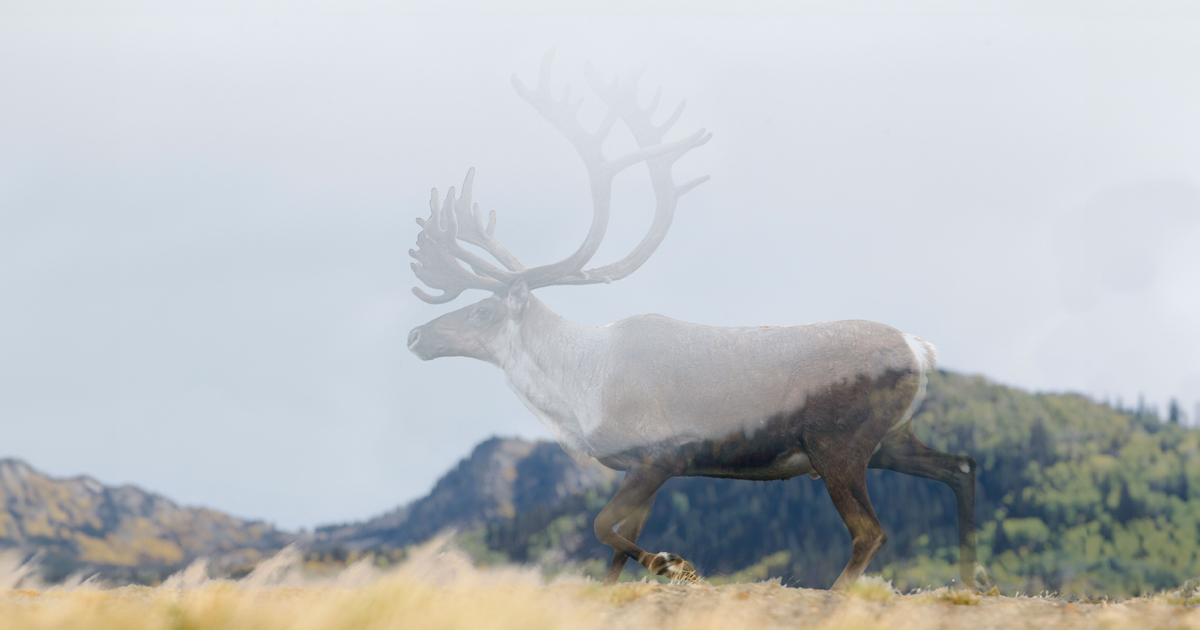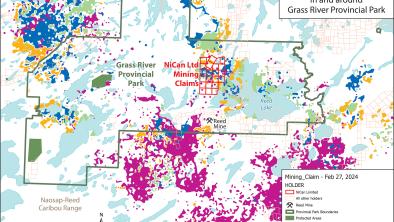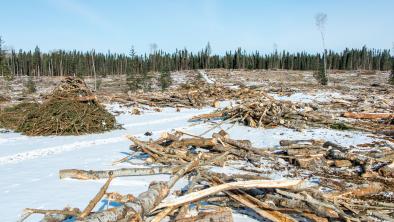Boreal caribou update: Ghosting a national icon

Caribou are one of the grand animals everyone is familiar with. They thunder across the tundra in the north, look out at us from the back of the Canadian quarter and their European cousins apparently haul Santa’s sleigh. But the woodland-dwelling caribou in the boreal forest are secretive creatures that folks simply never see in the wild, and they need our immediate help. The primary threat to boreal caribou is unnaturally high predation rates due to human-caused habitat loss, degradation and fragmentation.
21 years after identifying the need, caribou protection still elusive
In May 2024, Canada’s Ministry of Environment and Climate Change released a five-year progress report on the recovery strategy for boreal caribou, as required under the federal Species At Risk Act (SARA). The update attempts to put a positive spin on new conservation agreements with provinces and territories. But ultimately it reveals glaringly little progress due to the agonizingly glacial pace at which efforts to protect and recover this keystone forest species are rolling out across the country, even as the urgency grows due to their continued decline.
Sadly, this is nothing new. Delay, half-measures and political buck-passing has plagued caribou protection for two decades. Boreal woodland caribou were among the first species designated as threatened in 2003, when Canada established SARA. Instead of one year later as required by the legislation, it took nine years to draft a recovery strategy. Then the federal conservative government under Stephen Harper let the provinces and territories off the hook by giving them five more years to create action plans to maintain or restore each of the 51 caribou ranges. In 2017 all the provinces shirked that deadline with no consequences.
All of this begs the question: is Canada just not that into the ‘bou?
Quick Facts from the Federal Progress Report: Out of 51 caribou range populations:
|
Stuck between provincial rocks and a federal hard place
Over 95 per cent of the 51 identified caribou population ranges are under provincial and territorial jurisdiction. This means implementation of the federal recovery strategy requires provincial and territorial government action, as they are responsible for the management of land and waters. The federal government would like us to think it’s good news that, after missing the initial 2017 deadline, seven provinces and territories have developed federal conservation agreements, with money pledged from both governments. The bad news is that in desperation to achieve these agreements, the feds have let several provinces get away with weak action plans. They don’t meet the challenge of addressing the main cause of habitat degradation and disturbance: logging, mining and road-building in boreal forest.
In Ontario, the action plan approved by the feds in 2022 does not include a goal to maintain or achieve an explicit, range-scale minimum threshold of undisturbed habitat (required under the federal recovery strategy), nor does it propose restoration strategies. What’s worse, the province stubbornly refuses to accept well-established science on what caribou need for recovery. Instead, Ontario is delaying by re-inventing the wheel, reporting that “progress has been made on designing an approach to develop a boreal caribou science plan.” In other words a plan to make a plan to make a plan. It is also notable that out of nine caribou ranges in Ontario, exactly zero currently even have population data.
Manitoba also signed an agreement in 2022 under the previous conservative government. Of nine range planning areas they have met exactly ZERO of the action plan goals that were due in March 2024. What happened that month instead was the Wilderness Committee broke the story that the new provincial government in Manitoba is paying a company to do disruptive mineral exploration in critical caribou habitat inside a provincial park.
In Alberta, none of the 12 boreal caribou ranges meet the 65 per cent undisturbed habitat threshold, with some populations having as little as 0.7 per cent undisturbed habitat. Yet the province is still dragging its feet on protecting and restoring habitat.
Bringing the Emergency Order hammer down on provinces
While the fault for the production of weak approaches to conservation falls on the provincial and territorial governments, Canada is also to blame for accepting these plans despite their ineffectiveness and weak targets. Environment Canada has the means to intervene and enforce its recovery plan through SARA, including issuing an emergency order to compel the provinces to act. In fact, it’s in the midst of doing just that in Quebec, where three out of six range populations are declining and the other three have no population data.This is commendable and the federal government should immediately do the same for Ontario, at the very least.
The end result of weak provincial species protection and weaker federal enforcement is that we are ghosting a national icon. And we are severely calling into question Canada’s identity as good natural stewards. Caring for the caribou and the intact boreal forest and peatland that sustains them is also caring for ourselves. These landscapes act as important carbon stores and are the homelands of First Nations who have formed cultural and economic relationships with boreal caribou. We will continue to help the public hold all governments accountable.


